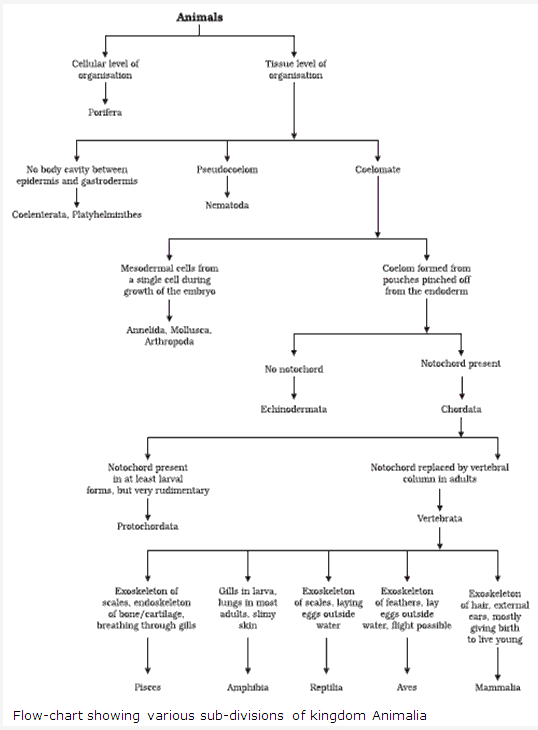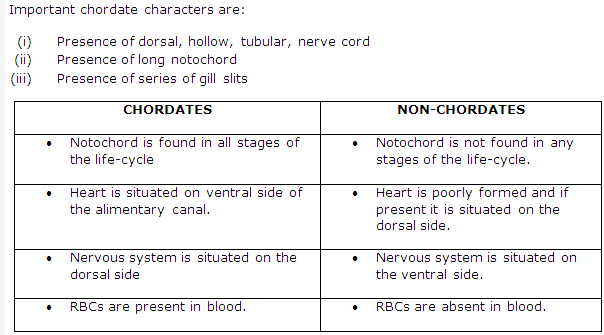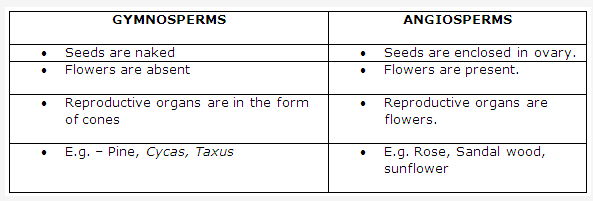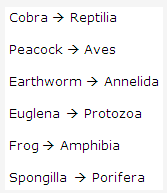Frank ICSE Solutions for Class 9 Biology – Diversity of Life and Classification
PAGE NO:117
Solution 1:
Diversity refers to the variety of living organisms found within a given ecosystem, biome, or on an entire planet.
Solution 2:
The method of arranging organisms into series of groups on the basis of similarities and differences is called classification.
Classification is important in the following ways:
- It makes the study of a wide variety of organisms easy.
- It gives us an overall picture of all the life-forms.
- It helps us to understand the interrelationships among different groups of organisms.
- It forms a base for the development of other biological sciences.
Solution 3:

Solution 4:
Taxonomy is the study of the theory, practice and rules of classification of living and extinct organisms.
Solution 5:
The five kingdom system of classification was proposed by R. H. Whittaker in 1969. This classification is based on the following four facts:
- Complexity of cell structure
- Methods of nutrition (autotrophic or heterotrophic)
- Complexity of body organization.
- Phylogenetic relationships.
The five kingdoms in this system are:
- Monera – It includes all the prokaryotes like bacteria and cyanobacteria. They are important decomposers.
- Protista – It includes the aquatic, eukaryotic, acellular organisms like protozoans.
- Fungi – This kingdom includes moulds, mushrooms and yeasts.
- Plantae – It includes all the coloured, multicellular, eukaryotes with cell walls.
- Animalia – These are multicellular eukaryotes lacking cell wall and showing heterotrophic nutrition.
Solution 6:
Important characters of five kingdom are:
Characters of kingdom Monera are:
- It contains acellular organisms, ranging in size between 0.15 to 2.0 .
- They are prokaryotes, lacking a well-defined nucleus .
- They usually lack chlorophyll and hence are parasites or saprophytes.
- Reproduction occurs by binary fission or budding in bacteria.
Example – Actinomycetes, bacteria, cyanobacteria.
Characters of kingdom Protista are:
- They are aquatic, unicellular organisms.
- They have eukaryotic cells with well-defined nucleus and organelles.
- They show autotrophic or heterotrophic mode of nutrition.
- Some protists are parasites and few are decomposers too.
Example – Euglena, Ameoba, Paramoecium.
Characters of kingdom Fungi:
- They may be unicellular or multicellular.
- They have heterotrophic nutrition and mostly they are saprophytes.
- Their body is made up of mycelium, a filament of which is called hypha.
- Their cell wall is made up of chitin.
Example – Aspergillus, Agaricus, Penicillium.
Characters of kingdom Plantae:
- They are multicellular, eukaryotic organisms.
- The cell membrane is surrounded by a thick cell wall of cellulose.
- Except a few aquatic life forms, plants are non-motile.
- They have different modes of nutrition: autotrophic, parasitic even
insectivorous.
Example – Mango, Cycas, Fern, Moss.
Characters of kingdom Animalia:
- They are multicellular, eukaryotic organisms without cell wall.
- They show heterotrophic mode of nutrition.
- They can retract or expand with the help of muscles.
- They are consumers in-between producers and decomposers.
Example – Fish, Frog, Earthworm, Man.
Solution 7:
The kingdom Plantae has been divided into following groups:
Thallophyta
- They are consists of red, green and brown algae.
- Algae are of universal occurrence.
- Their body ranges from unicellular to multicellular colonies, filaments or sheets of cells.
- Vascular tissues are absent.
- Nutrition is generally autotrophic (through photosynthesis).
- Reproduction is vegetative or sexual.
Bryophyta
- It consists of liverworts and mosses.
- They are terrestrial, found in damp, shady places.
- Their life cycle has a long gametophytic phase and a short sporophytic phase.
- Liverworts have prostrate thalloid gametophytic body, but mosses have erect body.
- True roots are absent, but rhizoids presents.
- Vascular tissues are absent.
- Nutrition is generally autotrophic (through photosynthesis).
- Reproduction is vegetative or sexual.
Pteridophyta
- They include ferns, horse-tails and club mosses.
- They occur mainly in cool, shady and moist places.
- They are mostly terrestrial.
- They are perennial herbs with stem in the form of rhizome.
- Fibrous roots present.
- Their life cycle has a gametophytic phase and a short sporophytic phase.
- Vascular tissues are present.
- Nutrition is generally autotrophic (through photosynthesis).
- Reproduction is vegetative or sexual.
Spermatophyta
- They are the most successful terrestrial plants having seeds.
- They produce seeds (fertilized ovules).
- They are divided into two groups –
- Gymnosperms -They bear naked seeds and lack flowers.
Examples: Pine, Cycas - Angiosperms – They produce seeds enclosed in ovary and flowers
are present.
Examples: Rose, Grass
Solution 8:

Solution 9:

Solution 10:
The various classes of Chordata are:
- Pisces – Labeo (Rohu), Scoliodon (Dog fish)
- Amphibia – Rana (Frog), Hyla (Tree frog )
- Reptilia – Kanchuga (Tortoise), Naja naja ( Cobra)
- Aves – Columba (Pigeon), Pavo (Peacock)
- Mammalia – Elephas ( Elephant), Funambulas (Squirrel)
Solution 11:

Solution 12:
Characters of mammals are:
- The females of this class are provided with mammary glands which produces milk to feed the young one.
- Body usually covered with hair, spines, scales, nail, hoof or horn.
- External ear or pinna is well-developed.
- They are warm-blooded.
PAGE NO:118
Solution 13:
(a) Starfish belongs to phylum Echinodermata.
Two characters of starfish are:
- Spines found on the body which is covered by calcareous plates.
- Body is star shaped with five radiating areas called ambulacra with inter-ambulacra in between.
(b) Whale belongs to phylum Chordata.
Two characters of whale are:
- They are warm blooded marine animals.
- Heart is completely four-chambered.
(c) Jelly fish belongs to phylum Coelenterata.
Two characters of jelly fish are:
- Body diploblastic having outer epidermis and inner gastrodermis with gelatinous mesoglea.
- Tentacles are present around the mouth.
(d) Cockroach belongs to phylum Arthropoda.
Two characters of cockroach are:
- They have jointed legs.
- Their exoskeleton is made up of chitinous cuticle which is shed from time to time.
Solution 14:

Solution 15:
Bryophyta – Liverwort and Moss.
Pteridophyta – Fern and Horsetail.
Solution 16:
Antedon (Sea lily) and Asterias (Star fish ).
Solution 17:
Whale
Solution 18:
Cockroach, crab
Solution 19:
Frog
Solution 20:
Echidna
Solution 21:
Earthworm – Pheretima posthuma and
Roundworm – Ascaris
Solution 22:

Solution 23:
(a) Arthropoda
(b) Porifera
(c) Mollusca
Solution 24:
(a) Protozoa
(b) Mollusca
(c) Annelida
Solution 25:
(a) Asterias (Star fish ), Echinus (Sea-urchin)
(b) Scoliodon (Dog fish), Labeo (Rohu)
(c) Fasciola ( Liver fluke), Taenia solium (Tapeworm)
(d) Ascaris ( Roundworm), Wuchereria (Filarial worm )
(e) Pheretima (Earthworm), Hirudinaria ( Leech )
(f) Palemon (Prawn), Periplaneta (Cockroach)
Solution 26:
(a) Annelida
(b) Coelenterata
(c) Arthropoda
(d) Echinodermata
Solution 27:
(a) Flame cells
(b) Nemathelminthes
(c) Annelida
(d) Porifera
(e) Chordata
Solution 28:
- (a) three pairs of legs are present.
- (a) coelentrata
- (c) octopus
- (c) paramoecium
- (c) hippocampus
- (a) Scorpion
- (b) for five kingdom classification
- (a) prokaryotic and multicellular eukaryotic cell
- (d) plant
- (d) C. Linnaeus
- (c) Carolus Linnaeus
